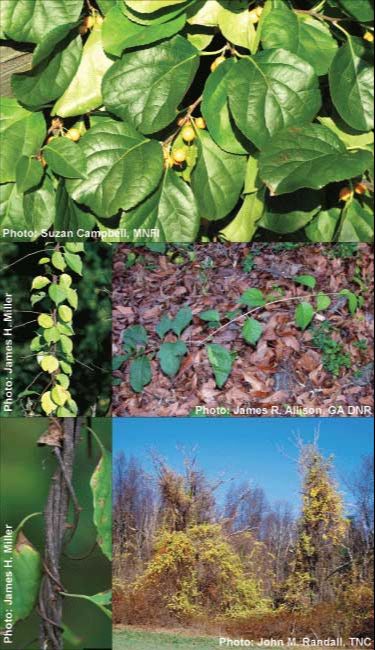|
Invasive bittersweet (Celastrus orbiculatus)
Why is it a problem? Invasive bittersweet is on the Top 12 list for Michigan’s northwest Lower Peninsula because it tends to strangle and replace native vegetation. Ecosystems dominated by oriental bittersweet alone, or in combination with other non-native species, can no longer provide critical food resources for wild creatures. Invasive bittersweet hybridizes with its cousin, American bittersweet, potentially threatening this native species to extinction. What does invasive bittersweet look like? A vine, invasive bittersweet stands out because of its bright orange berries. However, it can be more challenging to distinguish between its native relative, American bittersweet, especially when it hybridizes. The most reliable measure is that the native variety has fewer, larger berries at the end of each vine, in contrast with the photo of invasive bittersweet which produces smaller red seeds along each leaf axil. How do I manage invasive bittersweet? There are many gorgeous native alternative options for home landscapes to help reduce urban seed pressure on natural areas. Virginia creeper (Parthenocissus quinquefolia), pictured to the left, supports wild bird and butterfly populations, and also provides a fall color show. To remove existing populations, explore treatment options at the Michigan DNR’s invasive species webpage at Michigan.gov/invasivespecies. |
| habitatmatters.org |
Contact US231-252-4148
3334 Veterans Drive Unit A Traverse City, Michigan 49685 |
Pleasant Peninsula Design, Habitat Matters 2017


